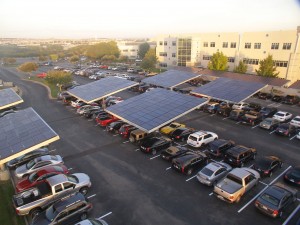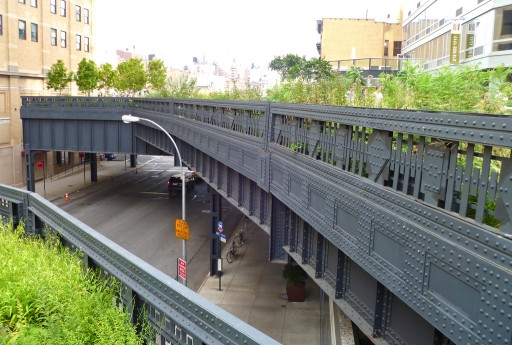
Solar panels line the parking lot outside of Dell Headquarters in Round Rock, Texas. (Photo credit: Envision Solar)
This New York Times article, “The Parking Lot as ‘Solar Grove’”, proposes a fascinating idea for urban development. An architect with Envision Solar sought to transform parking lots into more than just open, wasted space for vehicles. The idea was to build solar panels over parking spaces, which makes sense as a means to generate electricity for nearby urban infrastructure, especially with an enhanced smart grid system that could regulate power during peak demand hours. A major criticism of electric-powered cars, the article explains, is that manufacturers will create a huge demand for more energy — which would likely be powered by fossil fuel burning. Solar expansion over parking lots is a step in the right direction, adding the ability for drivers to charge their cars while shopping or at work. Panels can be implemented in other ways too. I think we need to begin thinking how smart developments like this can propose new ways of turning the traditional “concrete jungle” into useful, environmental spaces.


